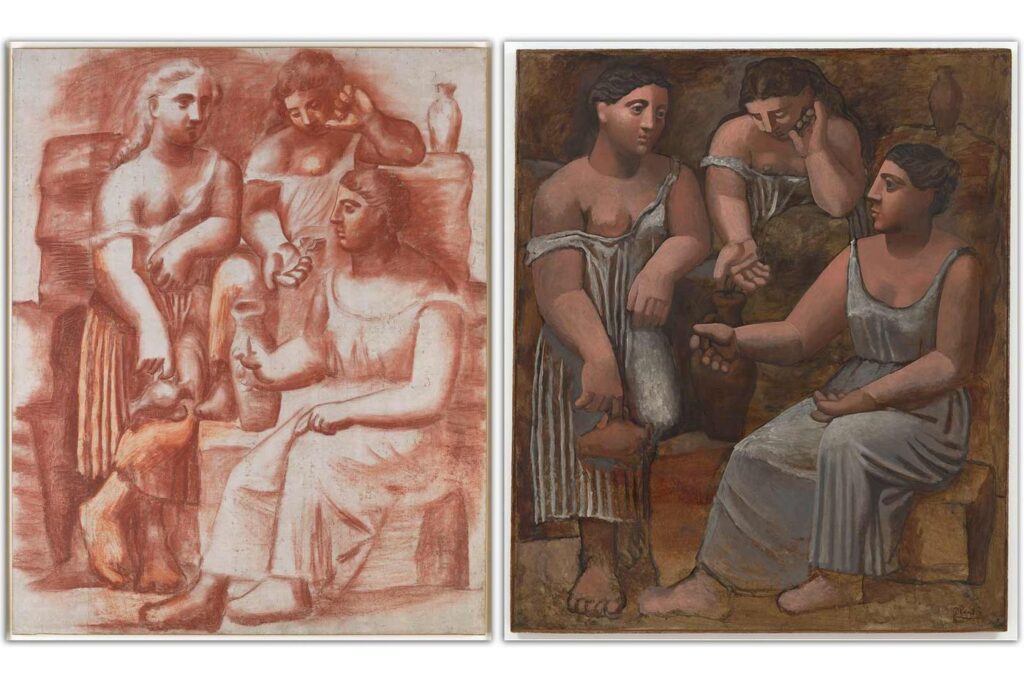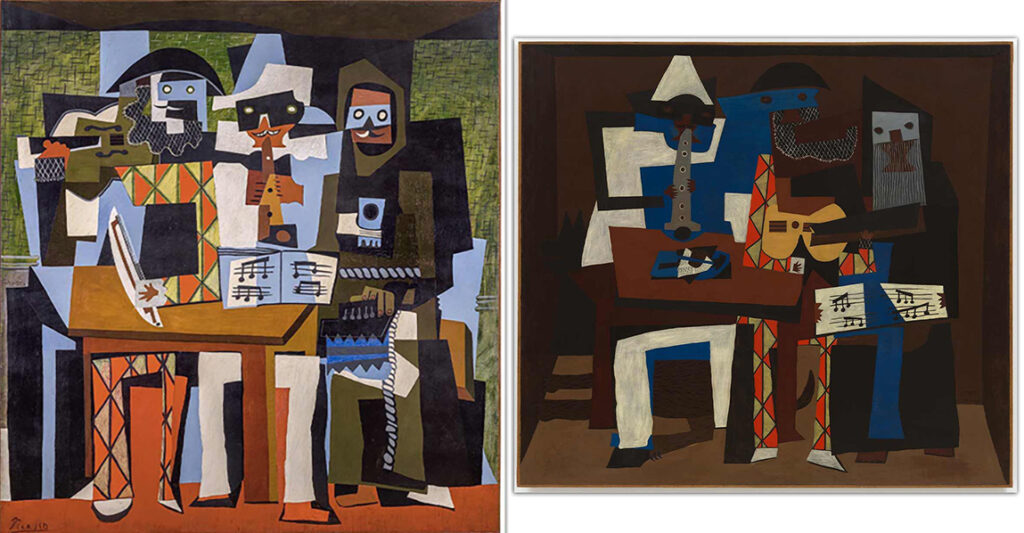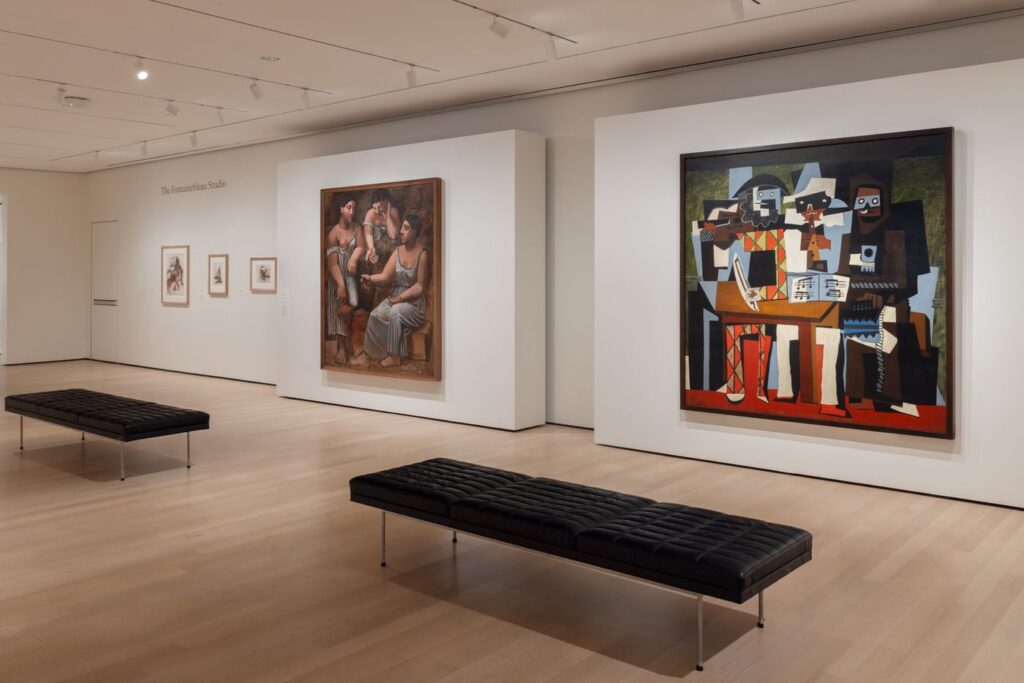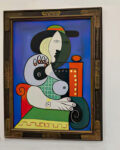A Summer in Fountainbleau
In the summer of 1921 Pablo Picasso rented a villa in the French countryside southeast of Paris. The location was Fontainebleau on the Isle-de-France. Famous for its royal palace and surrounding forests, Fountainbleau is now a UNESCO world heritage site. The palace, which dates from the mid 16th century, combines both French and Renaissance traditions.
During the three months that Picasso was at Fontainebleau he created over 80 pieces of art including paintings, drawings, prints and pastels. Much of his time was spent in a 10 x 20 foot garage and it was there that he painted four of his greatest masterpieces. He painted two versions each of Three Musicians and Three Women At the Spring. Each pairing has certain common characteristics including large size and the use of flat planes but stylistically they are radically different. Three Musicians are cubist paintings whereas Three Women At a Spring is done in a neoclassical style.
Three Women At the Spring
Picasso painted one version of Three Women at the Spring in oil and another in red chalk on canvas. Both were created in a neoclassical style with an earthen palette. Neoclassicism has roots in the classical styles in antiquity and focuses on order, clarity and emotional restraint. It also was a negative reaction against the ornate styling of the Rococo period.
The figures in Picasso’s oil version are monumental, statuesque forms not unlike Greco-Roman temple columns and Parthenon sculptures. There is a tranquility to the painting such as one might see in the art of Nicolas Poussin. The version in red chalk on canvas invokes the work of Leonardo da Vinci and other Italian renaissance painters. The artwork is not unlike the full size preparatory drawings (cartoons) used for painting large frescoes.
Picasso was not the only artist after World War I to embrace neoclassicism. This style can also seen in some of the works by his contemporaries, including Georges Braque and Henri Matisse.

Three Musicians
Three Musicians are two of Picasso’s most recognizable paintings. A cubist tour de force, each measures over 40 square feet. Their various brightly colored planes are stacked like a house of cards, buckling and bursting forth from the background. These seemingly static images are actually highly rhythmic examples of the folding and unfolding of the Cubist planes.
The same three musicians appear in each painting. The musician in white playing the clarinet is the sad clown Pierrot. The harlequin dressed in his red and yellow diamond costume is playing either a guitar or a violin. The third figure is the monk. Pierrot is believed to represent the poet Guillaume Apollinaire, the Harlequin is believed to represent Picasso, and the monk is thought to be the poet Max Jacob

104 Years Later
It has been just over a century since Picasso completed his four monumental works in Fountainbleau. We still don’t fully comprehend what motivated Picasso to create these pairs of stylistically different paintings. It has been suggested that he was intent on showing how classicism and cubist were actually related and inexorably linked. While that connection may be arguable, there can be no doubt that these four paintings will always be viewed as some of Picasso’s greatest work.
Three Musicians are located in the Museum of Modern Art in New York and the Philadelphia Museum. Three Women at the Spring can be found in the Museum of Modern Art in New York and the Musee National Picasso, Paris.
This article is based in part on a Wall Street Journal review by Lance Esplund along with the Museum of Modern Art (MOMA) exhibition book Picasso in Fountainbleau.





